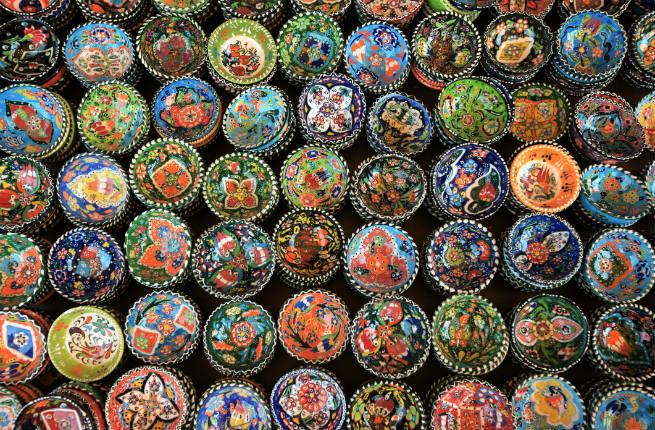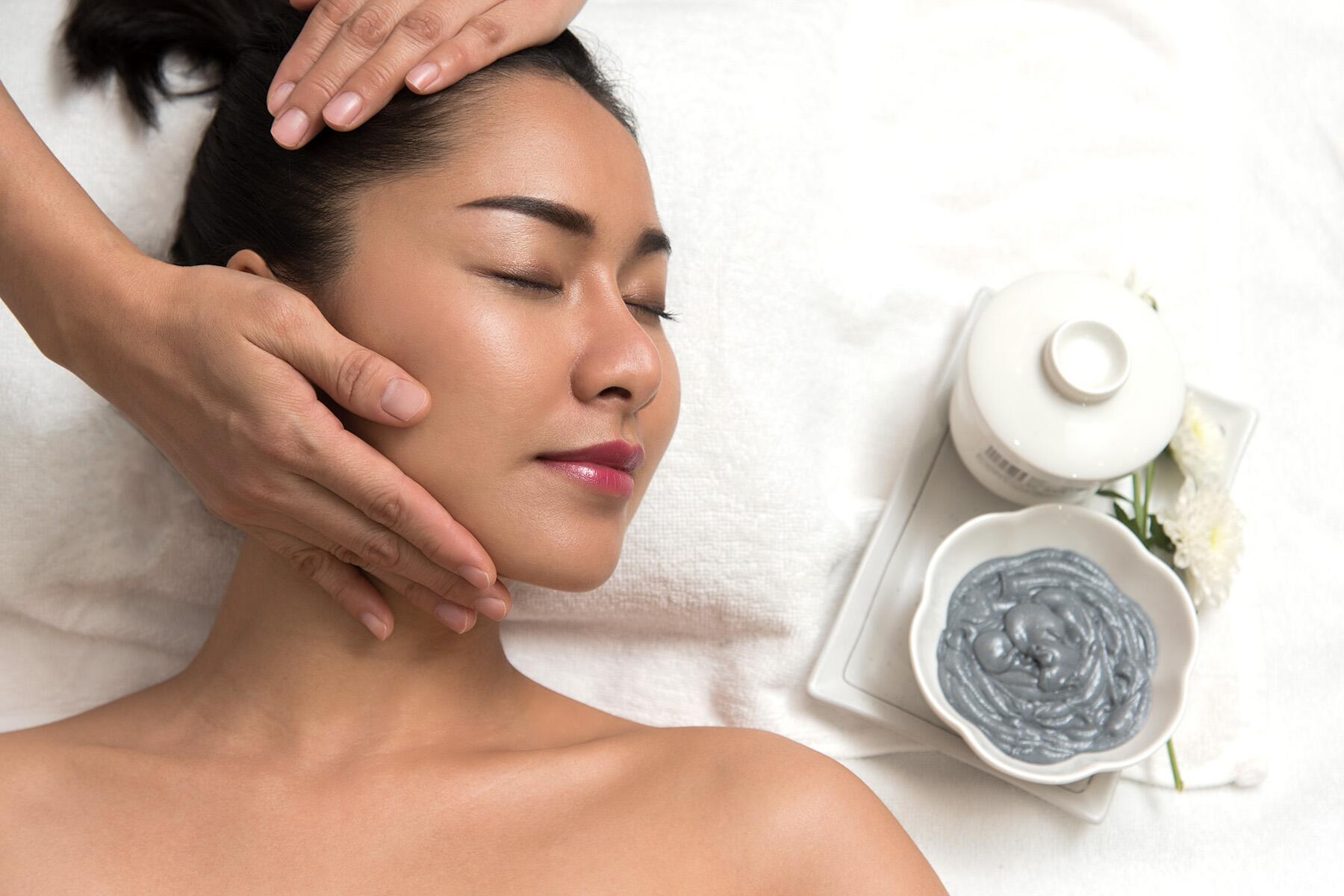
What do you think of when you hear “souvenirs”? How does that word make you feel? If you’re anything like me, it elicits a cringe or a grimace, perhaps a not-quite-whispered “ew.” I think immediately of garish gift shops lined with mass-produced items invariably made in China: statuettes of landmarks, snow globes, T-shirts plastered with eyeroll-inducing slogans and designs, chintzy toys to keep ill-behaved children occupied. In short, I envision all of the things I would never buy. Yet why should this be the case? I’ve begun to wonder how what should be an inherently feel-good category of items—tokens acquired on our travels—and the word “souvenir” itself have acquired such negative connotations.
I think it’s helpful to start with the basics: What exactly is a souvenir? The word’s origins can be found in Latin (subvenire, “to occur to the mind”) and later Middle French (souvenir, “to remember”). In the late eighteenth century, English speakers began to use the term much as we do now, primarily to refer to the objects themselves, though it can also be used as a verb (“to take as a memento”). Thus a souvenir is an item that evokes a specific memory, a definition that can apply to any object.
Recommended Fodor’s Video
When we travel, however, we actively seek out these keepsakes, making us active participants in determining how we will remember a place we’ve visited long after we’ve left, so we each bear a personal responsibility for making our own memories. The tragedy, then, is how cheap trinkets and tchotchkes, available to anyone, have become stand-ins for items that are supposed to speak to individual experiences, much like the commodification of travel itself tends to emphasize top attractions over personal exploration. But it’s time for us to reclaim souvenirs—the much-maligned word and the objects themselves—from the tourist-trap stores, because if you strip away the unfortunate associations, souvenirs are lovely things.
To be clear, I’m not suggesting that some souvenirs are inferior to others, only that many items thought to be souvenirs are simply not. A collection of refrigerator magnets may show off where you’ve been, but if your only memories of acquiring them are standing in line at airport gift shops, their value as souvenirs is zero. The beauty of souvenirs is that they can be anything—“one man’s trash is another man’s treasure” comes to mind—so long as we imbue those objects with meaning and memory. Indeed, the value of a good souvenir should only be immediately obvious to its owner, which is to say there’s nothing wrong with collectibles, but they shouldn’t be the only evidence of your travels. As the novelist Anatole France once wrote, “It is good to collect things, but it is better to go on walks.” To extrapolate a bit, souvenirs should encapsulate specific experiences you’ve had while traveling; otherwise, they’re no better than stamps in your passport.
And yet we live in the age of social media, where we can document our every move on Facebook, Twitter, and Instagram, effectively forming a digital record of our travels. Why, then, do we need souvenirs? Do physical objects even matter anymore?
I’m sure some people would argue that no, they don’t matter, a position with which I can only respectfully disagree. While it’s true that photographs, check-ins, and musings written on the go can evoke memories, these online artifacts simply lack the inherent power of tangible objects. If you believe, as I do, that a person changes a little bit every day and that the rate of change accelerates while traveling, then physical souvenirs reflect not only specific places but who we were in those places, how we felt about and interacted with the new surroundings. Joan Didion once wrote, “I think we are well-advised to keep on nodding terms with the people we used to be,” and I’ve found that souvenirs quite effectively conjure my former selves, like bread crumbs left along the path of life in case I ever get lost and need to find my way back.
In my Brooklyn kitchen, there is a Chinese cleaver that was once used by my Chinese host parents to prepare meals for me on a daily basis. They later gifted it to me during a return visit to Beijing more than eight years after I had lived with them. Today when I use the knife, I am reminded not only of eating homemade dumplings every Sunday night and the improbably small kitchen that produced some of the best food I’ve ever tasted, but also of the teenage boy who took risks and didn’t think twice about moving to the other side of the world, to live with a family who spoke no English, when the opportunity presented itself. From a recent trip to Sicily, I have wine, olive oil, dried oregano, and capers—no one said souvenirs have to last forever, right?—all vivid reminders of an island where a focus on good ingredients permanently altered the way I think about food, leaving me with a lingering taste for simple and pure cuisine that honors its components rather than obscuring them. On my bookshelf sits a golden statuette of a rooster procured in Hong Kong by a guide who, accurately sensing my general anxiety about goings-on back home, said it would bring me good luck upon my return. I look at the rooster now and I see the good luck that has come to me since and also the malaise that has been overcome.
And then there are the clothes, which tend to be my most treasured souvenirs. There’s an element of fantasy and playing dress-up to it, but nothing brings my travels to life like certain wardrobe items—clothes make the man, after all. My favorite souvenir of all time is a tan, faux-suede, slightly eighties-looking jacket found in a vintage store in Berlin in the fall of 2012. I spotted it on the rack and loved it immediately; however, thinking it was too small, I tried to make my then-boyfriend buy it for himself, but he mistakenly didn’t want it. I couldn’t abandon that perfect jacket in the subterranean store, though, so I bought it. Truth be told, it’s a bit too short and it looks weird when zipped, but there’s something magical about that jacket. I put it on and immediately I’m transported to Rosa-Luxemburg-Straße, where the lofty apartment I rented served as a home base for days spent in derelict-chic cafes and late nights spent in impossibly hip bars with the city’s creative set. I can channel all of the excitement and energy of that trip simply by putting on the jacket, and that makes it powerful. For what it’s worth, I’ve never received more compliments on a clothing item than I have on that jacket, from friends and strangers alike.
I also love an impeccable pair of handmade leather oxfords that I spent way too many pounds on in London, even though I’ve been known to wear boat shoes far more often than is socially acceptable. But when I lace up those Grensons, I feel rather like a stylish young lad hopping from posh restaurant to posher cocktail bar, as I often do when I’m in London. Then there are the West Coast-casual outfits purchased in San Francisco, bold-print shirts from Glasgow, more-colorful-than-I-would-usually-wear socks from Madrid, and so on. All of these items directly connect me to changes I’ve made at home and abroad, and so they serve as valuable signposts from the past.
Of course, if you follow the minimalist ethos of Marie Kondo, the past might not interest you all that much, since only objects that “spark joy” are the ones worth keeping. Miss Kondo’s anti-clutter stance is admirable, but I’ll hold on to my train tickets and museum maps, thank you very much. Travel is about having life-changing experiences, both good and bad, and true souvenirs are the most effective means of keeping track of the lessons learned while away from home. If our travels are among the most cherished experiences in our lives, then our keepsakes should be just as good. Joy is beside the point. Does it spark your memory? Great! If not, throw it away—you deserve better souvenirs.



